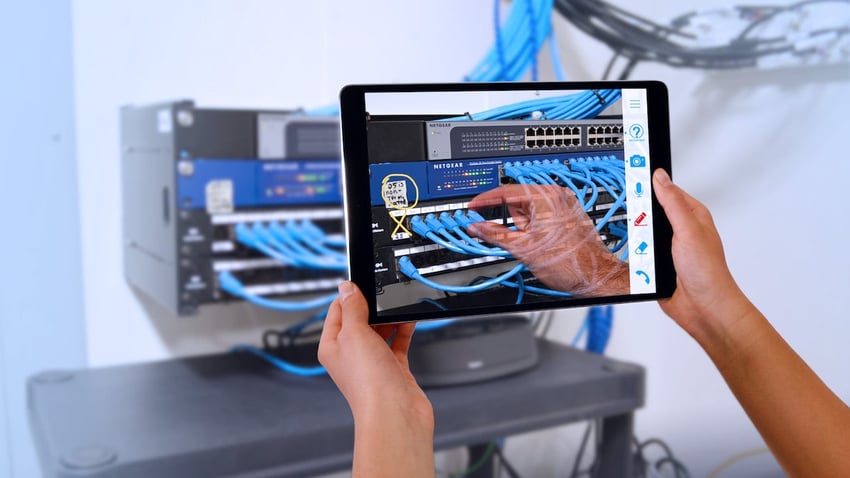4 Reliability Scenarios That Keep IT Decision-Makers Up at Night
IT decision-makers (ITDMs) have always had a challenging role, but this has never been truer than it is in the era of digital transformation. Without reliable solutions at their fingertips, ITDMs are in an even tougher spot, lacking the resources they need to advance the company's IT strategy. Here are four nightmarish reliability situations that keep ITDMs up at night.

1. Call Quality Issues Grind Business to a Halt
Picture this: Your company's president is on an important phone call, and, without warning, it drops. If you've faced this ITDM challenge, you know how uncomfortable it feels to be called to the conference room for tech support in that sort of situation. Your colleagues depend on reliable business communications to move the company forward, and now everything is at a painful standstill. It's even worse when you're not sure what's causing the problem. What can you do?
Excellent call quality is non-negotiable for any business, and your team must guarantee it. With quality of service (QoS) configured for your business communications systems, you can do just that. By prioritizing phone traffic above other types of network traffic, you can make sure your important business calls receive the VIP treatment they require.
SmartWAN technology offers a more cost-effective method for guaranteeing QoS across remote offices, even providing handy failover options in the event a primary network connection goes down.
2. Patchy Video Conferencing Throws a Wrench in Collaboration
Video conferencing helps business teams collaborate more effectively, bringing remote colleagues together as if they were in the same room. But when a video conference is unreliable, it can grind all of that productivity to a halt. Sudden packet or data loss can cause glitches in a video chat, leaving your colleagues searching for another way to compare notes on that time-sensitive proposal they were working on. And if it's a video conference involving clients or business partners that went awry, your business looks unprofessional.
If you're already encountering call quality issues, you'll likely run into trouble with your video conferences as well. Video conferencing is even more bandwidth-intensive than voice calling, placing an especially pronounced strain on network performance when QoS is not present. For this reason, it's essential to have QoS for video conferencing in place so that you can properly prioritize video conferences above traffic that is less dependent on timely packet delivery.
3. Remote Offices Experience Frustrating Latency
Latency issues are one of the biggest challenges facing decision-makers. If you have remote or branch offices, you may run into this aggravating problem. Even when communications at the main office are performing well, employees might encounter serious latency issues when traveling to another location across the wide area network (WAN). Users will feel the effects, often without warning and at times that are hard to predict, in the form of jitter or garbled-sounding calls, dropped calls, or degraded video conferencing sessions. And although ITDMs do wield a considerable amount of control over the LAN, this power does not extend to the WAN. How can they solve this problem?
Fortunately, there are a couple of options for addressing latency when your business has multiple locations. You could extend the LAN to another location, but that can be costly when you're dealing with multiple locations. SmartWAN technology offers a more cost-effective method for guaranteeing QoS across remote offices, even providing handy failover options in the event a primary network connection goes down.
4. Callers Get a Busy Signal During Peak Season
Many businesses have peak periods of the year during which they receive a higher volume of incoming calls than they normally would. Retailers especially notice this uptick during the holiday shopping season. If the business's phone systems aren't designed to handle this extra capacity, however, then prospective callers may find themselves getting a busy signal — and that, needless to say, isn't great for business. On the other hand, it often doesn't make financial sense to over-resource a business communications system based on peak calling needs that only arise for limited periods of time during the year.
IT decision-makers can address this challenge by implementing SIP trunking, which allows them to spread capacity across multiple locations. That way, if one store or location experiences a spike in calls, the others can pick up the slack — and vice versa. Businesses can also use SIP trunking to update their legacy phone systems, gaining access not only to reliable communications but also to cloud-hosted voice, video, data, SMS, and other unified communications services.
Dependable communications are critical to business success, which is why reliability is one of the key pain points of IT decision-makers — and what keeps them up at night. Without it, productivity takes an immediate hit, the company is unable to achieve a professional presence, and customers may even decide to take their business elsewhere. But with the right solutions in hand, ITDMs can sleep soundly knowing their organizations have exactly the right technology to compete and thrive in today's dynamic business landscape.
Looking for a reliable, private, scalable unified communiations solution? Check out the Vonage Business Communications platform.